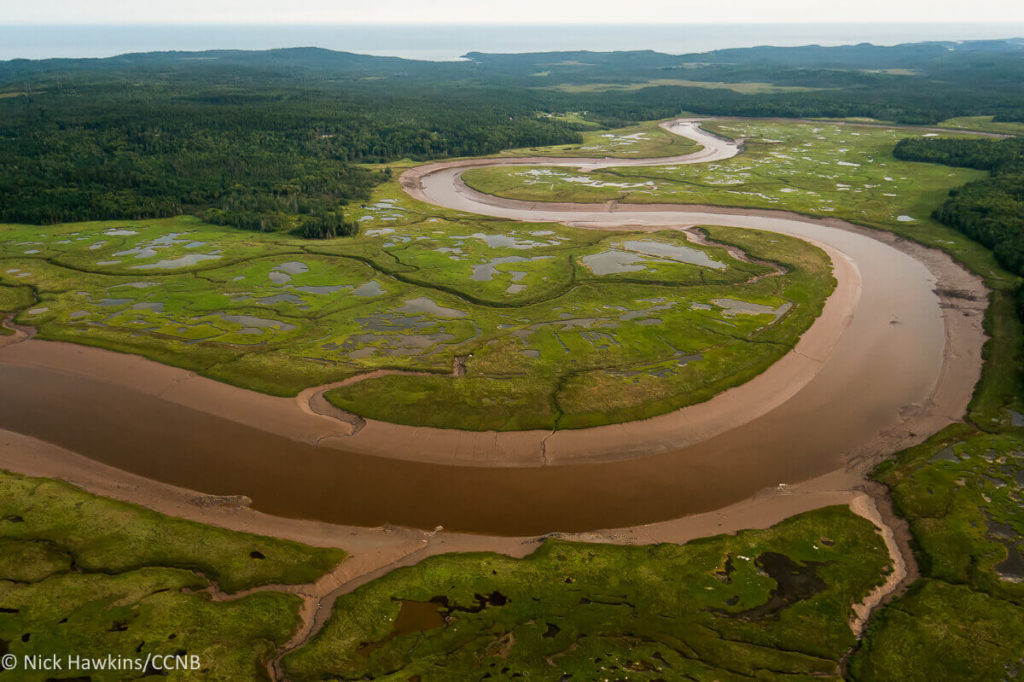Baykeeper submits recommendations on new tool to protect ocean habitat, wildlife
The Conservation Council of New Brunswick recently submitted recommendations to help ensure the federal government’s proposed ecologically significant areas (ESA) framework becomes an effective tool for protecting the sensitive marine habitats that fisheries, wildlife and coastal communities depend upon.
Announced in 2018, the ESA framework is a conservation initiative to identify and protect critical natural habitats and ecosystems across Canada’s freshwater, estuarine and marine waters. Fisheries and Oceans Canada, through its Fish and Fish Habitat Protection Program, released a draft of the ESA framework for feedback from Indigenous communities, conservation groups, fisheries and other stakeholders.
ESAs are based on scientific criteria that assess the ecological significance of different areas, such as the presence of rare, threatened, or endangered species, unique ecosystems, or even key ecological functions. An example of that could be estuary identified as an ESA for its role in filtering pollutants, providing habitat for waterfowl, and helping to mitigate the impacts of floods and droughts.

Matt Abbott, our Fundy Baykeeper and director of marine conservation, says that ESAs have the potential to be an important tool for filling gaps that have made effective habitat conservation challenging in some areas.
He says the Conservation Council’s decades-long campaign to have the Musquash Estuary designated as a Marine Protected Area in 2006 would have benefited greatly from the well-defined process of the ESA framework.
While Musquash is certainly deserving of MPA status, Abbott says that as an intact and productive estuary with large salt marshes, only having the MPA tool available at the time meant that complex arrangements had to be made with the province to protect intertidal areas and the large salt marshes).
Further, as much of the risk to the estuary came from the potential for land-based developments, the Conservation Council had to rely on the good work of the Nature Conservancy of Canada to acquire and protect surrounding lands to prevent major development adjacent to the estuary and salt marshes.
“ESAs would streamline this process, allowing for a clearer and more direct route toward identifying significant areas like the Musquash salt marshes, and protecting these critical habitats without the need for a patchwork approach,” Abbott says.

The Conservation Council’s recommendations to ensure effective and well-implemented ESAs are below:
First, given that ESAs are to be established in various unceded Indigenous territories, we believe it is critical that co-governance efforts are underway at the beginning of any ESA establishment process. This recommendation aligns with the framework’s recognition of the importance of Indigenous knowledge and perspectives in conservation planning and decision-making. We also recommend clearly stated commitments within the framework to fund and maintain capacity within the Department of Fisheries and Oceans (DFO) to implement ESAs.
We believe it is critical that individuals or organizations can nominate areas for designation as an ESA. As was the case with the Musquash MPA campaign, a well-articulated process for nomination of ESAs with associated timelines is critical. Once the regulatory process for an ESA is started, we advise interim measures to ensure no habitat-damaging activities are permitted while the ESA establishment process is underway.

The Conservation Council also recommends building Indigenous Guardians and other monitoring programs into ESAs from the outset. Given that climate change can severely impact any ESA after it is established through extreme floods, temperature changes, or droughts, these programs will provide information critical to ongoing, effective management of ESAs.
Finally, we advise government to create a process to batch ESAs together, with the same regulations and prohibitions, to cover important habitats that can occur in relatively small patches throughout a region. For instance, salt marsh habitats or more than one river system could be covered under the same regulatory process.
Stay tuned to this space for updates on the implementation of Canada’s ESA framework.
Did you know...
Share this article with your friends and family
